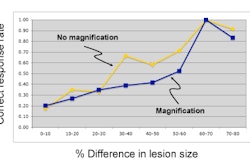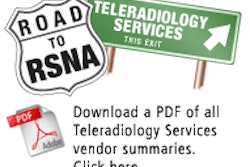SEATTLE - Significant opportunities exist for the collaboration and convergence of information technology (IT) and informatics between pathology and radiology by sharing mass storage technologies and clinical experiences in general workflow.
"Clearly, there are benefits from both sides with better interoperability," said Dr. Paul J. Chang, the director of pathology informatics and vice chairman of radiology informatics at the University of Chicago Pritzker School of Medicine. "A lot of times, the pathologist will use the image in radiology to determine the final call on the histology, which means there is the potential for improvement, where we (radiologists) get access to what they need to help us and they get access to our images."
Chang offered his perspectives on the potentially mutual benefits during this week's Society for Imaging Informatics in Medicine (SIIM) meeting.
One of the biggest IT challenges to interdepartmental collaboration is that, unlike radiologists who can interpret images from different regions of the body, pathology's subspecialties are considerably more diverse and complex.
"You can't find one individual pathologist that understands all of pathology, because there is no such thing as one pathology," Change said. "It is incredibly frustrating for someone whose job it is to build an IT infrastructure and informatic solutions to address their needs.... An immunology lab has completely different workflow needs than a hematology lab."
Lessons to be learned
Among the lessons that radiologists can learn from pathologists is image management. One CT image, for example, is greater than all the textual and numeric structured data within a patient record, Chang said. Because pathologists handle millions of exams per year, radiologists can learn more about data structures and databases, as well as how to improve indexing of that data.
With large database management experience, Change said pathologists are "very serious about quality control" and radiologists' peer review and quality assurance "pales in comparison" to what pathologists do.
The converse of that benefit is that pathology's near future IT needs will become even more demanding with the need to store these massive amounts of information. That situation will require "significant horsepower" from IT systems and infrastructure, Chang said. "You'd be a fool not to leverage your investment in mass storage in your archive and PACS and not use it for pathology. As a radiologist, we want to be relevant to patient care, and it makes no sense to give a radiology report that doesn't assess for clinical correlation or correlation of lab values."
Pathologists also make great use of automation with functions, such as bar coding and specimen tracking, but not before the extremely labor-intensive process of specimen collection and analysis. "The lack of automation in lot of these systems is made up in pathology by double-, triple-, and quadruple-checking their work," Change said. "It is an incredibly human-intensive endeavor, even in semiautomated operations, and it is very inefficient and expensive."
Specimen tracking
In radiology, the patient image is the specimen, and digital images can be tracked and are unambiguously associated with the patient from the start of the caregiving process. Unfortunately, pathology cannot do that because pathologists are dealing with actual specimens, such as tissue and blood, which must be delivered and stored in its physical form.
Everywhere a specimen is tracked from one place to another, there is a handoff from one person to another, complete with paperwork, like the way it was in radiology before PACS. Anatomical pathology is similar to radiology in that the analysis of tissue results in reports that are narrative with some structure.
"The documentation of samples is critical for value because we, in radiology, have the spatial resolution for when (pathologists) sample," Change said. "We need to immediately give them the information on where we think the lesion is, and they need to document that they have found it there. So, it works both ways."
To make workflow more efficient, pathology is looking to adapt voice recognition technology and transcription services to the degree that radiology has begun to embrace the technology and continues to do so.
Telepathology's future
As is the case with teleradiology, telepathology is increasing in prevalence for whole-slide imaging, which raises the IT issue of slide image size and storage. A pathology image typically contains 15 to 60 GB per slide per single focal plane, according to Chang. For a small community hospital, a pathology department would generate 10 TB of information per day. By comparison, it would take a radiology department in community hospital 10 months to generate 10 TB of information in a PACS.
"The real need is reliable specimen tracking in anatomic pathology," said Chang, who added that bar coding may be one way for radiologists to track the progression of specimens.
Interoperability between pathologists and radiologists has great potential, Chang emphasized. Pathologists "don't make a call many times unless they have access to our (radiologists') images. We want to make sure they document how they sample the specimen, and we want their sampling to be driven by our imaging."
By Wayne Forrest
AuntMinnie.com staff writer
May 17, 2008
Related Reading
Enterprise-wide image management brings multiple benefits, April 21, 2008
Web-based issue-tracking system boosts radiology QC, April 4, 2008
Effective communication is crucial for radiology department success, March 20, 2008
Language processing technology guides pathology, imaging studies, January 24, 2008
Copyright © 2008 AuntMinnie.com



















